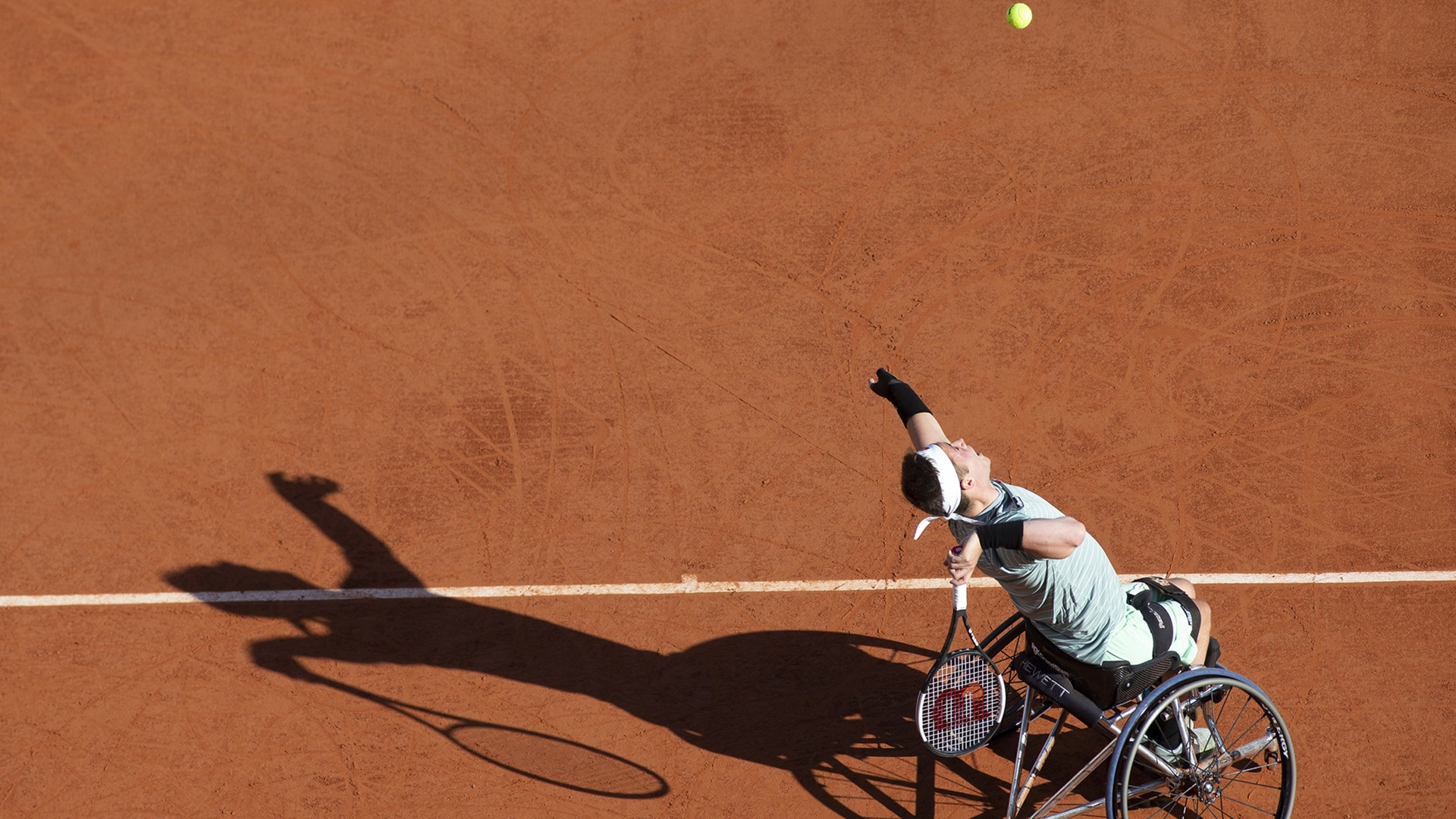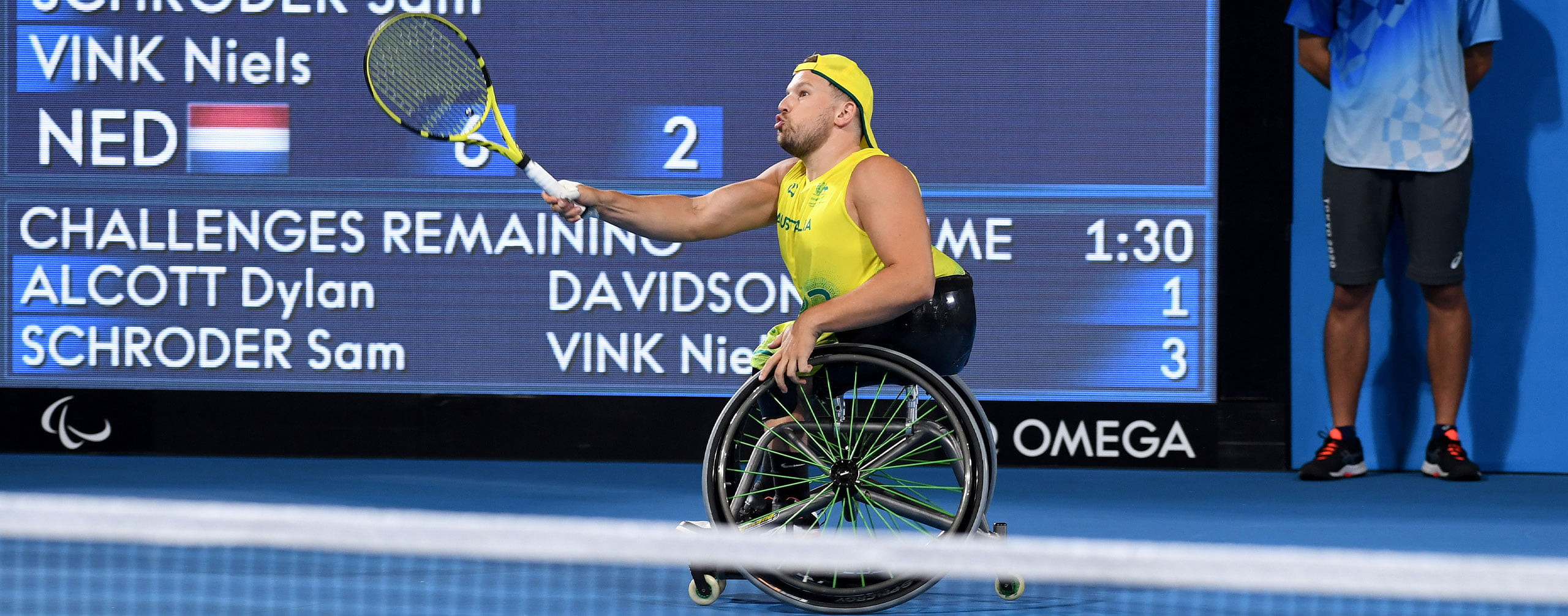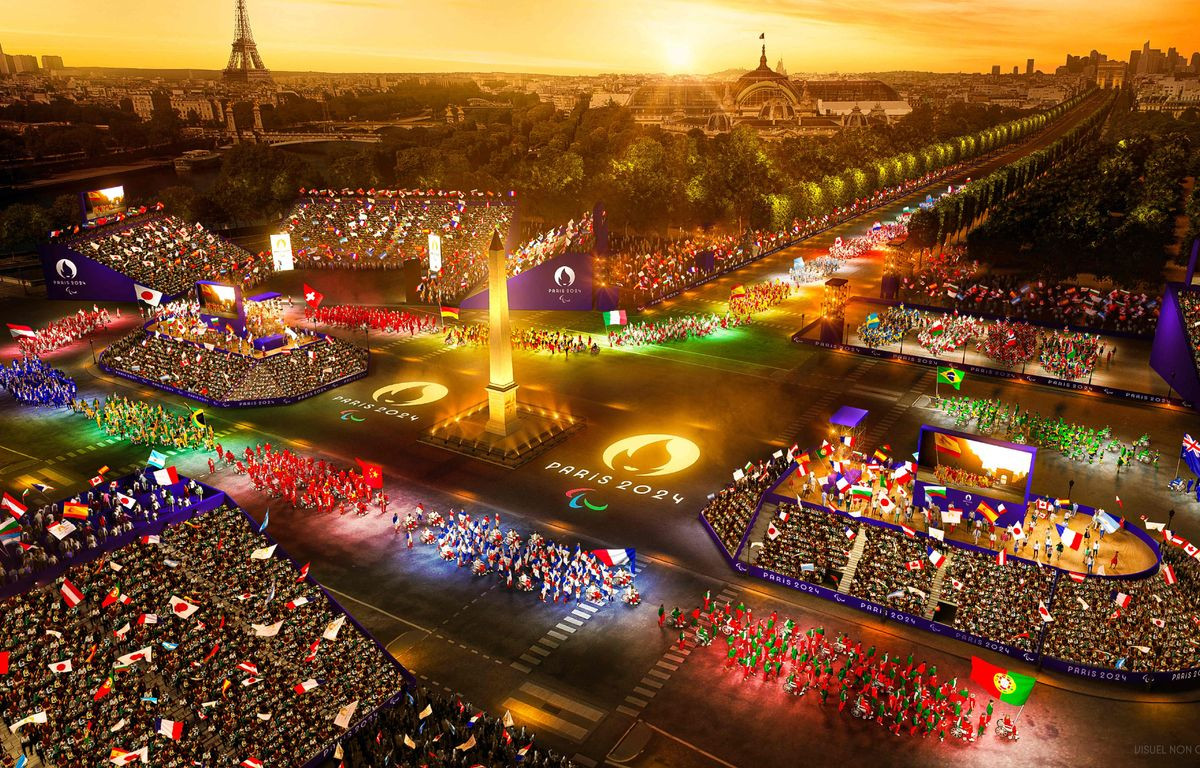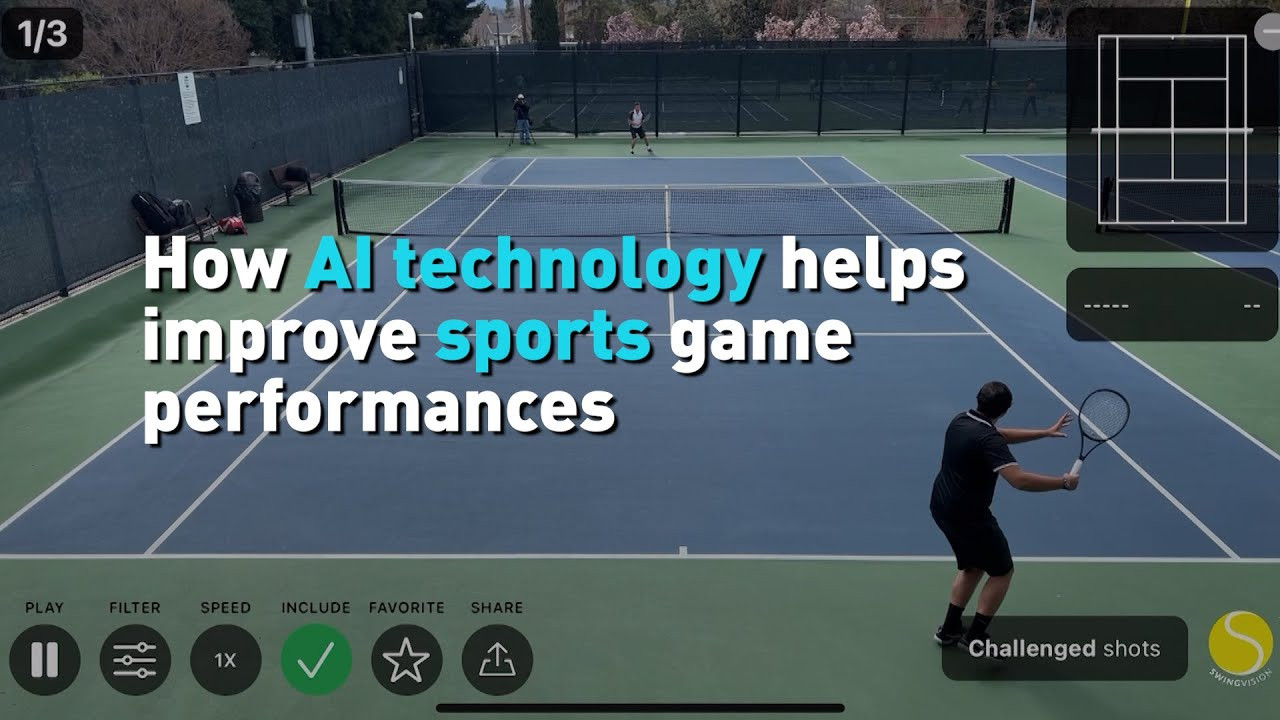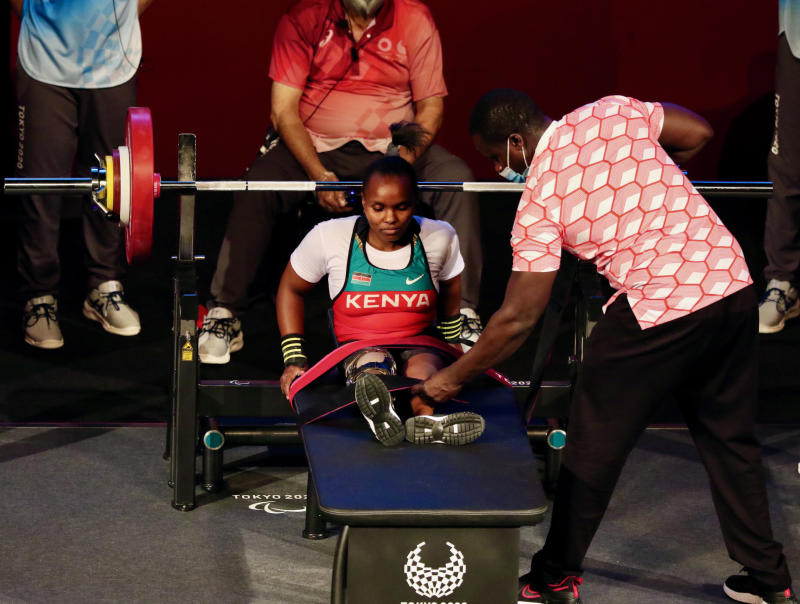With the start of the Paris Paralympics 2024, enthusiasm and expectation are growing continuously for the international display of athletic skills. The celebration of wheelchair tennis, a sport that showcases the amazing abilities of players, is one of the highlights of this year's Paralympics. In honour of wheelchair tennis, Google has unveiled a special Google Doodle to showcase the spirit of the sport.
Wheelchair tennis was founded in 1976 by US freestyle skier Brad Parks. The sport quickly gained popularity and it was introduced to the Paralympic Games in 1992.
The International Paralympic Committee mentions: “Wheelchair tennis was founded in 1976 following work by former US freestyle skier Brad Parks.The sport grew in the 1980s as France became the first country in Europe to put together a specific wheelchair tennis programme. The sport made its first appearance at the Barcelona 1992 Paralympics.”
The game follows the same rules as normal tennis, with a few adaptations to accommodate the use of wheelchairs. Players are allowed two bounces of the ball before returning it, and the sport features an impressive array of techniques and strategies that highlight the players' agility, precision, and strength.
In honor of wheelchair tennis' successes and importance at the 2024 Paralympics in Paris, Google has produced this unique Doodle that highlights this thrilling sport. The Doodle, which shows the Paralympic birds participating in wheelchair tennis, has colourful and energetic artwork that perfectly conveys the spirit of the sport.
The Paralympic Games and the larger sports community have greatly benefitted from wheelchair tennis. It has inspired millions of people worldwide, questioned preconceptions about disability, and showcased the amazing potential of athletes with mobility disabilities.
A Fast-Paced Sport
Spider, butterfly, suicide … these are not the names of Marvel superheroes, but the names of power drills that wheelchair tennis players deploy to get faster on the court.
And when it comes to playing on the bouncy clay courts of Roland Garros at the Paris 2024 Paralympic Games, speed is essential.
“I love it. The faster, the better for me,” Dutch quad player Niels Vink told Olympics.com about playing in the mecca of French tennis. “My game style is perfect for that, so I love clay. In the stadiums, the bounce is a little bit higher, the game is faster, so it's all good for me.”
The Tokyo 2020 double medallist, Vink, relished the faster play during his quarter-final win over Canada's Robert Shaw on Monday (2 September), which he called one of the “top five” matches of his career. Vink was well prepared for the speed of that match, too.
While drills can be boring, they are anything but for the Dutch players who call them by names like “spider” and “butterfly”. The other national delegations at Paris 2024 also sprinkle fun into their wheelchair tennis training, learning to be faster by competing in friendly 100m sprints or wheelchair basketball games.
Drills for Speed
Backhand, forehand, lob, slice, stroke – as a tennis player, you may have mastered all of these moves. But can you spin like a butterfly or crawl like a spider?
In wheelchair tennis, these are the moves players are working on as they flit backwards, forwards and sideways on the court.
“We have the ‘butterfly’, we have the ‘fan’ drill, we have ‘dead bugs’, which is a core exercise. It’s lying on your back and moving your arms and legs at the same time so you look like a dead bug on his back,” Gordon Reid, the Rio 2016 men’s singles champion from Great Britain, told Olympics.com.
“The ‘butterfly’, that’s a movement drill just on the court. So it’s to try and simulate the movements of forehand and then backhand because of the way we move around the court with figure eight movements. It’s kind of the shape of a butterfly that you’re moving in.”
“Spider” is a drill where wheelchair tennis players make little eights around cones set up in the corners of the court. For the “fan” drill, the athlete starts out on the line in the middle of the court, goes to the right corner, back to the middle, then the far left corner, and back to the middle.
There are also some drills that pack a bit more punch.
“You start on the doubles line, then you go to the singles line and back to the middle line and back to the other singles line and back, and the doubles line and back,” Vink said. “And then you start again, and you do it two times. You have to turn every time the bigger round. We call it the ‘suicide’.”
Whichever name you call them by, these are exercises that Reid says are essential to stay at the top in wheelchair tennis.
“From a mobility side of things, for speed in the chair, we’re obviously doing a lot of strength work to be as powerful as possible, but also agility and reactive stuff as well, to try and be sharp and move well,” Reid said. “And then for the speed of the ball, from that point of view, it’s trying to be as free as possible in the shoulder and the rest. And that obviously involves a lot of stretching, physio and exercises.”
Racing for Speed
While there are no wheelchair tennis drills named after cheetahs or gazelles, some of them are purely about speed. These also tend to be the most fun.
The British men’s players staged a 100m race in the last week of their Paris 2024 training camp, and Reid was proud to announce the result.
“I won that one. I took the young guys out,” the four-time Paralympic medallist said with a smile. “I don’t think I’m beating any records, but I’m happy to get the win in that one.”
The Dutch team reduce their races to a 20m dash and compete individually. Like the Brits, however, they also make sure to keep track of the results.
“We do a lot of measuring, just to see if we’ve gone forwards or backwards,” de Groot told Olympics.com. “Maybe we are steady, staying at the same speed, but we try to monitor it as well.”
For de Groot and her teammates, the focus is on explosive power. That is something Argentina’s five-time Grand Slam winner Gustavo Fernandez works on as well.
“We do the explosion exercises, trying to be fast in order to move around the court, especially in the low movements because in tennis it’s very important to put yourself behind the ball and in order to do that, you have to be very powerful in the upper body,” Fernandez explained.
“We don’t do the 100m. We do 10m, 5m, moving exercises in short distances and we try to manage like that.”
Unfortunately for Fernandez, there are few wheelchair tennis players back in Argentina to fill a 100m race on the track. But should players from other countries choose to challenge him in that event, you can be sure he will be ready.
“In Argentina, normally, I don’t have too many players to compete with, but I would like to do a 100m competition between all of us to see who wins,” Fernandez said, before moving on to evaluate his chances. “Gordon [Reid] is very fast. But I think I would be on top.”
Having Fun While Training
Diede de Groot has associated trying to improve her speed and agility on the court with fun games since she first started in the sport.
Growing up, she would challenge herself to pick up the balls as fast as she could and played wheelchair tag with other kids to see how fast she could go.
“Playing tag, those were my favourite things. Maybe not even tennis when I was seven, but pushing the chair and being fast and doing that with the other kids,” de Groot said. “I think once you start enjoying it, it becomes fun and you want to do it.”
Making training fun is one of the keys for Turkiye’s Ahmet Kaplan whose wheelchair tennis sessions can easily turn into wheelchair basketball or American football games.
“We do some fun stuff with the team, with the coaches,” Kaplan said. “We do some drills sometimes. We’re playing basketball on the tennis court or we’re throwing the ball at each other, playing American football.
“We are just running like hell on the court. I feel like this is also helping to be active on the court, to be fast on the court.”
Aside from being fun, the drills help the Turkish player stay alert while he's playing in wheelchair tennis matches, including in his gruelling two-hour quarter-final against Great Britain’s Andy Lapthorne on 2 September.
“I am moving all the time on the court. If you stop in the wheelchair in tennis, you’re going to be too late for the first push,” Kaplan said. “You have to be all the time moving your reaction. Doesn’t matter which direction, if you have movement, you can easily turn. So I’m trying to do be focused on moving on the court.”
Speed is Key
While technique is crucial for wheelchair tennis success, players also know that these skills cannot be executed well if they are not fast enough to reach the ball on time.
“The movement, it’s very important to us,” Vink said of the importance of speed and agility in his sport. “For able-bodied, you can step to the side, but we have to turn all the way, so the technique of pushing has to be very good. And you always have to be very alert because when you have to turn the other way, it’s sometimes very difficult to get to the ball.”
His teammate de Groot does not need to be reminded of the importance of moving fast on the court. She has been doing drills on this since her first days in the sport and speed is now one of her biggest weapons as a player.
“For the 10 years that I’ve been a professional tennis player, I’ve always found that the pushing on court is something that is very important and maybe sometimes overlooked. So I’ve been doing that from the start,” said the Tokyo 2020 women’s singles champion, who has gone undefeated in 145 matches until May 2024.
De Groot works in the gym to improve her strength and pushing power. On court, training includes pushing around corners and going backwards and forwards in the wheelchair, while in the gym the Dutch ace may exercise on a bench or do push ups to get stronger.
Angelica Bernal of Colombia also puts in the hours at the gym so she can then soar on the field of play.
“We’re working really hard in the gym because you have to move the wheelchair and be quick and hit the balls strong, and you don’t know if you have to play one hour or three hours, so it’s really hard work in the gym,” Bernal told Olympics.com. “When I play wheelchair tennis, I think I fly on the court and can run and get every ball.”
Fly, yes, but can the wheelchair tennis players get even faster?
“Always, always,” Vink said. “If you don’t think you can get better or faster, you can stop.”
Google Celebrates the Sport
Amid the Paris Paralympics is underway, Google on 3 September has unveiled a special Google Doodle to celebrate wheelchair tennis at the Paris Paralympics 2024.
Founded by US freestyle skier Brad Parks in 1976, the wheelchair tennis follows the same rules as tennis but has been adopted with some modifications.
With its doodle, Google has tried to honour the athletic skill and determination of the players by celebrating wheelchair tennis. The Google engaged doodle features animated birds.
In the doodle, google showed two birds playing the tennis in a wheelchair in the pristine Parisian garden of Jardin du Palais Royal, or Jardin des Tuileries.
The wheelchair tennis events, which started on 30 August in the Paris Paralympics, will end on 7 September at the Roland Garros Stadium in Paris, known for its clay court. The tournament features singles and doubles matches in the men’s, women’s, and quads categories.
On 3 September, Japanese tennis player Yui Kamiji, France's D.De Groot and China's Z Y Wang proceeded to semifinals in the women's singles. While the match between China's XH Li and France's A van Koot is underway.
According to the International Paralympic Committee (IPC), wheelchair tennis is one of the fastest-growing wheelchair sports in the world.
It gained momentum in the 1980s, when France became the first country in Europe to develop a specific wheelchair tennis programme.
Wheelchair tennis was first introduced at the Barcelona 1992 Paralympics.
Though the size of the court, rackets, or tennis balls is not modified, the rules are different, including the ‘two-bounce rule,’ which allows the ball to bounce twice before being hit.
Apart from the Paralympics, athletes compete in a series of tournaments including Grand Slams: Australian Open, Roland Garros, Wimbledon and US Open, plus the singles and doubles Masters.
Also, the wheelchair tennis is governed by the International Tennis Federation (ITF).




